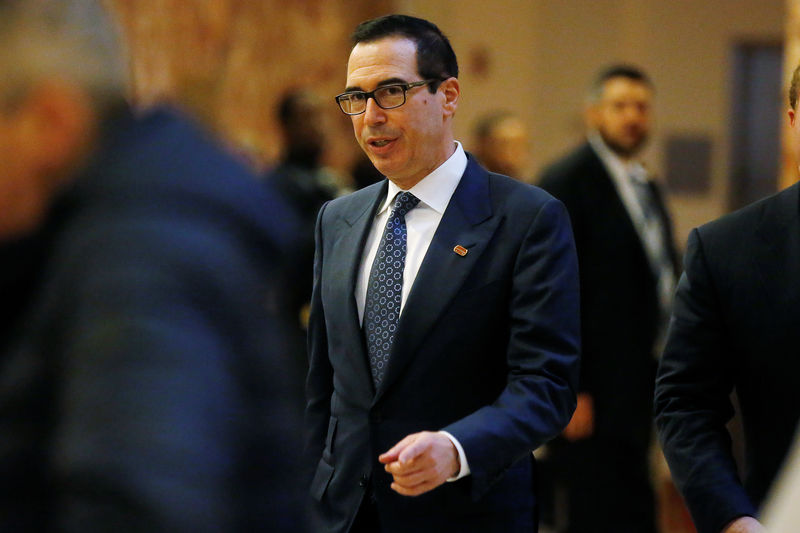(Bloomberg) -- Chinese and U.S. negotiators are working line-by-line through the text of an agreement that can be put before President Donald Trump and counterpart Xi Jinping to defuse a nearly year-long trade war, according to officials familiar with the matter.
U.S. Treasury Secretary Steven Mnuchin and U.S. Trade Representative Robert Lighthizer held meetings in Beijing Friday partly to ensure there were no discrepancies in the English and Chinese-language versions of the text, and also to balance the number of working visits to each capital, according to the officials, who asked not to be identified because the talks aren’t public. Chinese Vice Premier Liu He is due in Washington next week.
The focus on the joint wording has become a key issue after U.S. officials complained that Chinese versions of the text had walked back or omitted commitments made by negotiators, the officials said. The two sides have very different understandings of certain words, according to one of the officials, who noted that China’s Vice Commerce Minister Wang Shouwen started his career as a translator at the ministry.
China’s Commerce Ministry didn’t immediately respond to faxed questions seeking comment.
The burst of diplomacy suggests both sides remain determined to reach an agreement that would avoid any escalation of a trade war that has seen them impose duties on $360 billion of each others’ imports. China wants the U.S. tariffs imposed on Chinese goods lifted but Trump said last week the duties would remain in place for a “substantial period of time.”
At stake is an agreement that could resolve a conflict that’s roiled markets and cast a shadow over the global economy. White House economic adviser Larry Kudlow said Thursday the two sides were “close” but “not there yet,” and that the U.S. is willing to keep negotiating for weeks or even months yet to reach a sustainable deal.
“This is not time-dependent,” he said in a speech in Washington on Thursday. “This is policy- and enforcement-dependent.”
As China nears agreement with the U.S., officials are keen to maintain an appearance of equality between the two sides, hence the focus on matching visits to Beijing and Washington, the people said. While talks have taken place by phone over the past month, the last face-to-face meetings took place in Washington in February.
Enforcement Mechanism
The key areas where the U.S. is demanding better terms include China improving treatment of U.S. intellectual property, opening up market access for American companies and agreeing on an enforcement mechanism for the trade deal, Kudlow said. The U.S. wants regular meetings to assess whether China is living up to promises, and wants to be able to impose tariffs on China -- with no threat of counter-retaliation -- if it fails to do so, he said.
The U.S. focus on translation issues came after negotiators felt China was backtracking on previous commitments it made on IP and tech issues. After the latest round of face-to-face talks, Chinese negotiators frustrated U.S. officials by sending back text on IP with entire sections crossed out that had already been agreed to by Lighthizer and Liu, people familiar with the situation said.
Kudlow on Thursday said the U.S. may remove some of the tariffs on Chinese goods, but not all. “We’re not going to give up our leverage,” Kudlow said. “It doesn’t necessarily mean that all of the tariffs would be kept in place. Some of the tariffs would be kept there. Again, when Bob Lighthizer comes back, he will illuminate all of us on that. That’s part of the negotiations and we’ll see."
